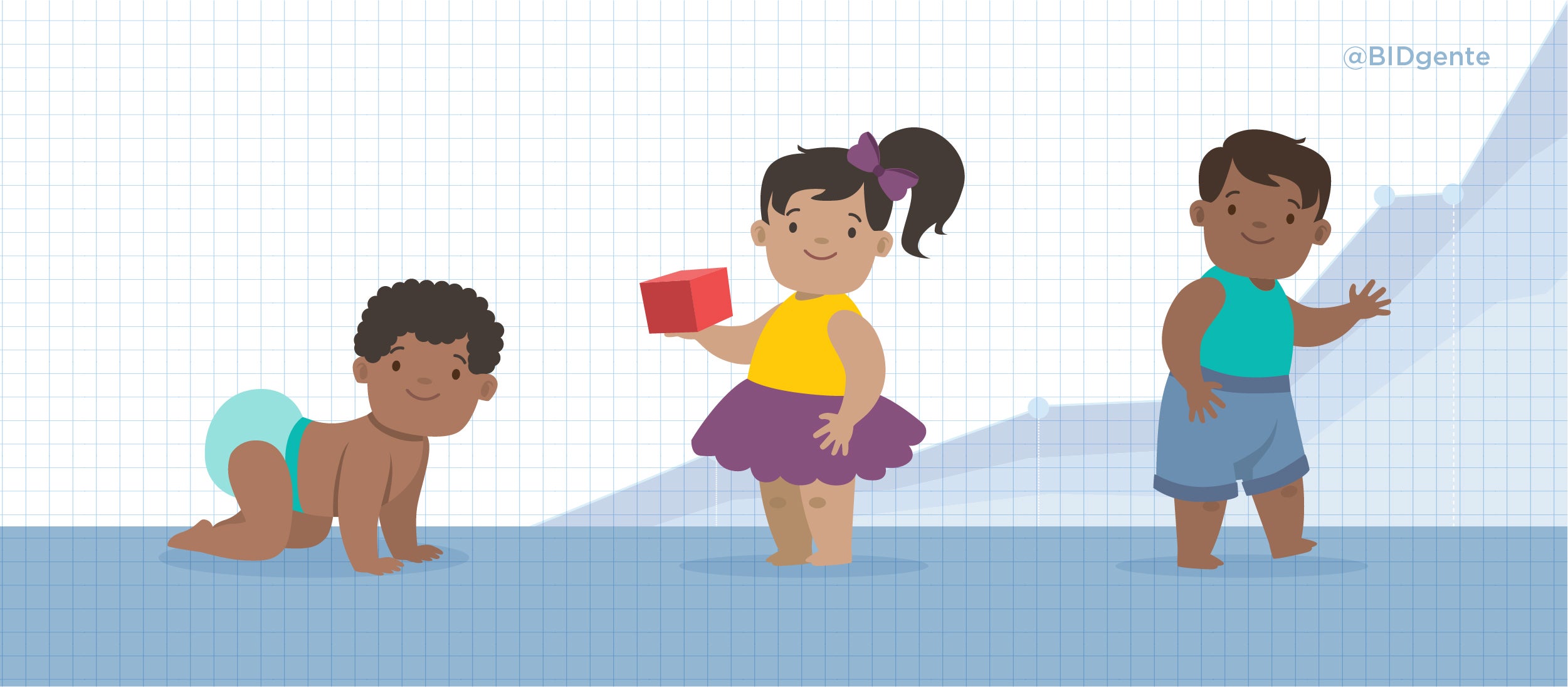“Coming together is the beginning. Keeping together is progress. Working together is success.” This famous quote is a good introduction to the story we want to share with you in this post.
Motivated by the need to report to the Sustainable Development Goals (SDGs), countries around the world are working towards developing population-level indicators of early child development that are valid, sensitive, and feasible to measure at scale—for example, in the context of a nationally representative household survey. Ideally, however, all these efforts should be coordinated across countries so that the indicators produced are comparable across countries (and across groups within a country).
A Groundbreaking Initiative
The Global Scale for Early Development (GSED) Group represents a remarkable effort along these lines. Its aim is to construct a global population-based measure (test) of child development for children under 3 years of age that meets the aforementioned criteria and can be used for global monitoring and assessment. The Group, which convened in Washington, DC in early November to review its progress and plan next steps, gathered top statisticians and child development experts from three separate initiatives that, previously, were independently working to achieve similar goals: the Caregiver Reported Early Development Instrument (CREDI), the Infant and Young Child Development (IYCD) and the D-Score group, which was born from within the Global Child Development Group (GCDG).
What is impressive about the GSED is precisely that it has succeeded in bringing together the knowledge and expertise of many researchers, as well as the data they have collected over many years, to generously put together what is probably the largest bank of child development instruments and items worldwide to date. It includes information on 73 thousand children, 51 cohorts, 109 thousand measurements, 2275 items, 22 instruments and 22 domains! What is more remarkable is that, even if each initiative began from a different conceptual framework and approach, the group has worked hard in identifying the complementarities and strengths in each other’s approaches to define a unified path for GSED.
Statistical methods are currently being used on this unique, rich source of information to identify the items best suited to develop two global instruments for the assessment of children aged 0 to 3. The first ought to be used in population-based surveys which, conducted via caregiver reports, should take no more than 5 minutes. The second is planned for use in impact evaluations of child development interventions and, as such, will need to be detailed enough to capture changes in development resulting from the intervention, thus requiring longer administration times (approximately 30 minutes) and a combination of caregiver reports with items to the child.
So What?
Both instruments will be easy enough to be applied by survey enumerators, sufficiently trained, in the child’s home; reliable and valid across different socio-economic, linguistic and cultural contexts (thus including items that are culturally neutral or easy to adapt); and predictive of later-life outcomes. In addition, both will be freely accessed and available to the public, and, most importantly, the indicators derived from them will be easy to understand and interpret.
The GSED work is well advanced and within a few months, the group will have a first prototype version of each one of the two instruments. The next big step will be to test these prototypes in the field, refine them and validate their properties empirically. A plan is in place to apply both instruments in 4-6 countries covering all regions of the world to learn from their practical administration and adjust the test, materials, administration protocols, and training and technical manuals as needed.
This is an exciting milestone in the global area of child development measurement and sets a high bar—and an excellent precedent—related to scientific collaboration and multi-party coordination. It will allow for the global tracking, monitoring and assessment of child development, thus holding countries accountable for their progress (or lack thereof) in promoting learning capabilities and pyscho-social well-being among their youngest citizens.
We celebrate the progress and look forward to supporting the work of the GSED in the coming months. We hope some of the pilot administrations can be implemented in Latin America and the Caribbean. Moreover, the GSED method—in terms of the approach to harmonizing a databank of items and statistical modelling, but also in terms of the collaborative process—could be replicated and extended beyond 3 years-of-age so as to have a test and indicator that covers the entire range of the early years, from birth to five years, targeting Sustainable Development Goal 4.2.1. This would be an unprecedented and much needed next step.
How do you think this method could improve childhood development outcomes in your country or field of work? Share your thoughts in the comments section or mention @BIDgente on Twitter.


Leave a Reply